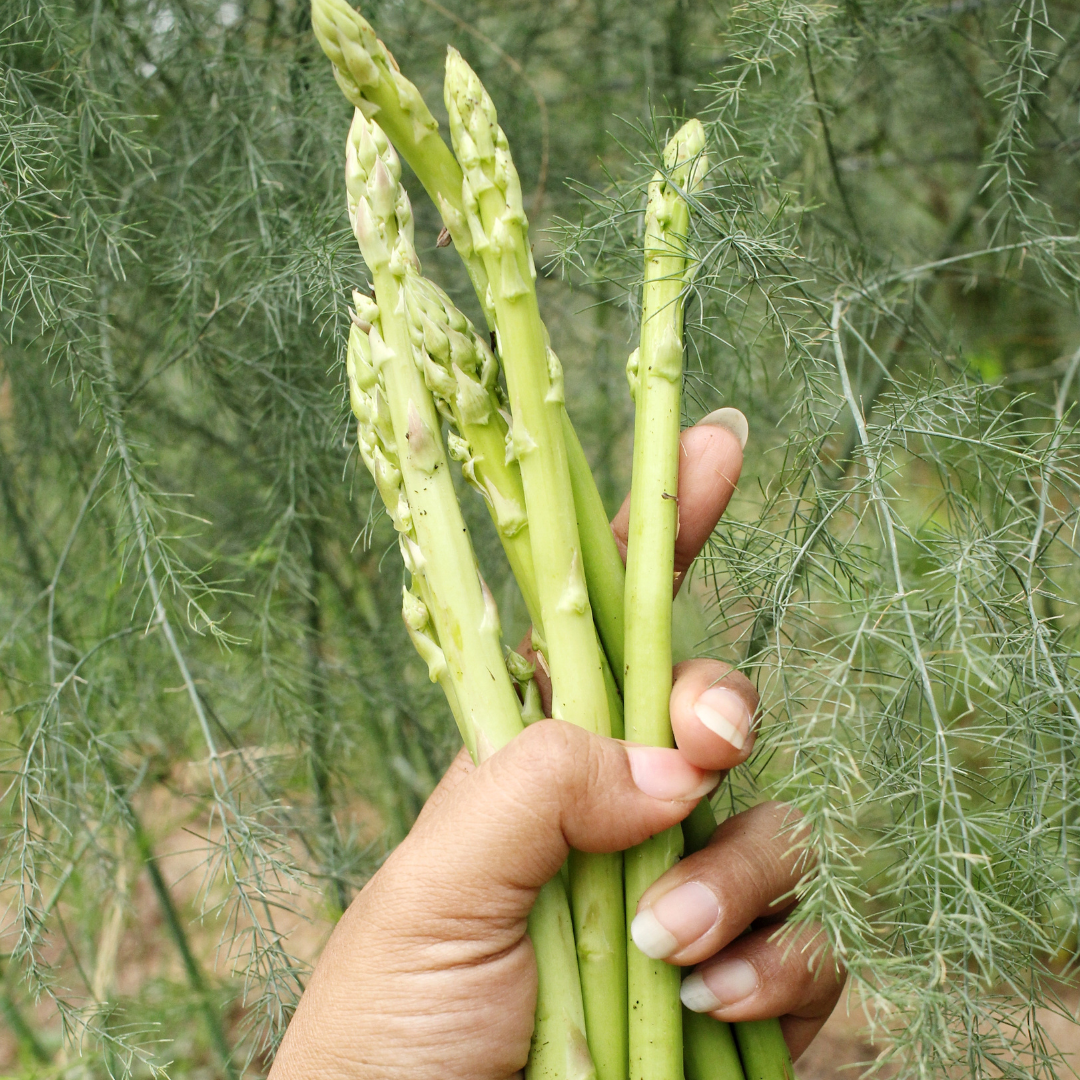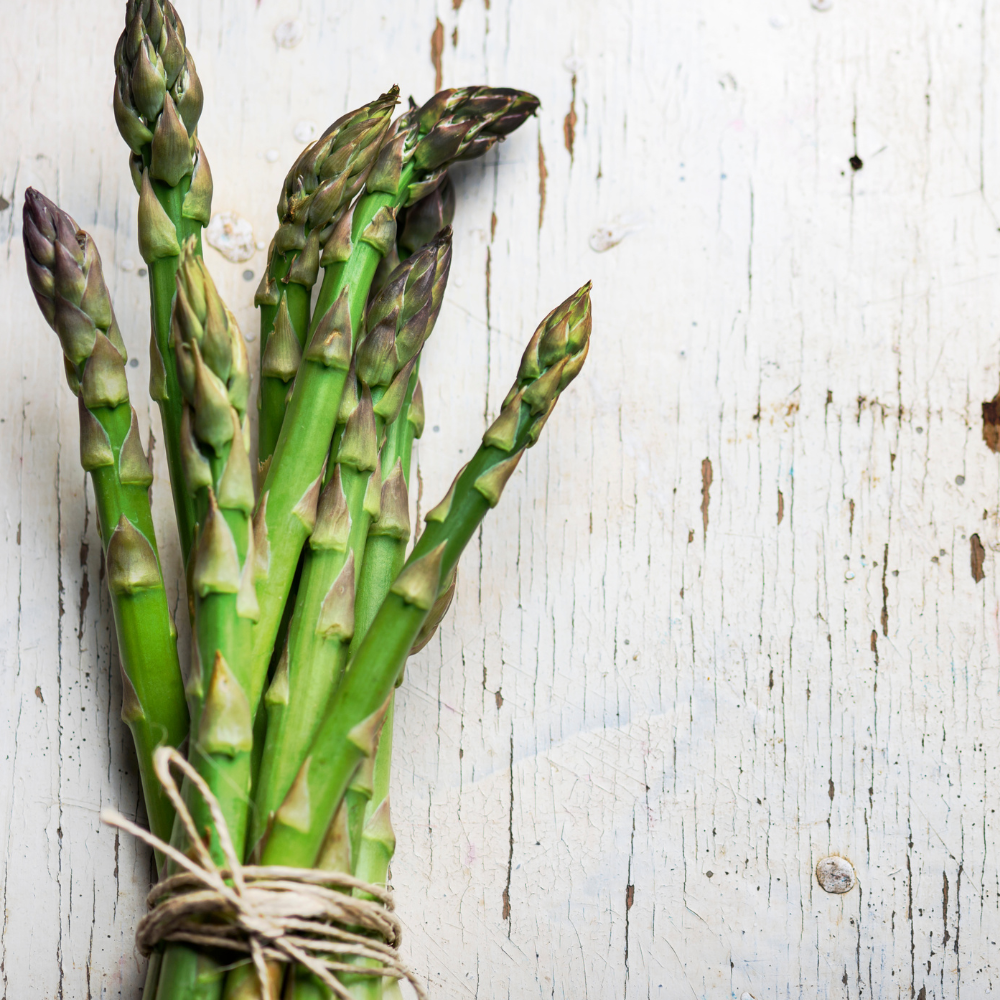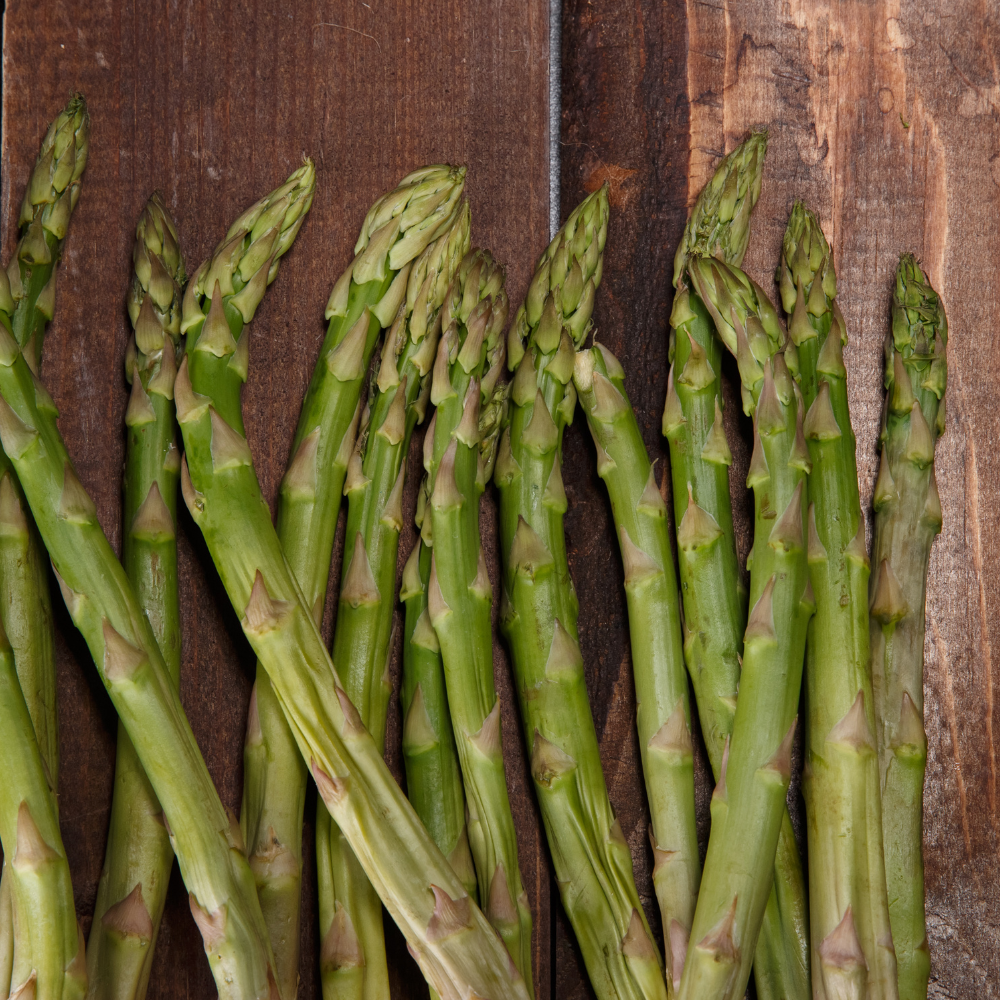Asparagus is a favorite vegetable in our family. We always look forward to spring when we can harvest our planted asparagus. Asparagus is a funny vegetable to grow since it shoots spears up through the soil. Come learn how to grow asparagus from seeds to have fresh asparagus every year!
How Long Does it Take for Asparagus Seeds to Germinate?
Asparagus seeds can take some time to germinate, varying depending on several factors. Here's what you need to know about the germination time for asparagus seeds:
-
Soil Temperature: Asparagus seeds require warm soil temperatures to germinate. The ideal soil temperature for germination is between 70-85°F (21-29°C). If the soil temperature is too cold, the seeds may take longer or not germinate.
-
Seed Quality: The quality of the seeds can also affect the germination time. Fresh seeds harvested from healthy plants are more likely to germinate quickly and produce healthy seedlings.
-
Moisture: Asparagus seeds require consistent moisture to germinate. Be sure to keep the soil moist, but not saturated, during the germination process.
-
Light: Asparagus seeds do not require light to germinate, but they should be planted at a shallow depth of 1/4 inch (0.6 cm) to allow easy access to moisture and warmth.
Seed Safe Survival Seed Kit - 35 Variety Pack
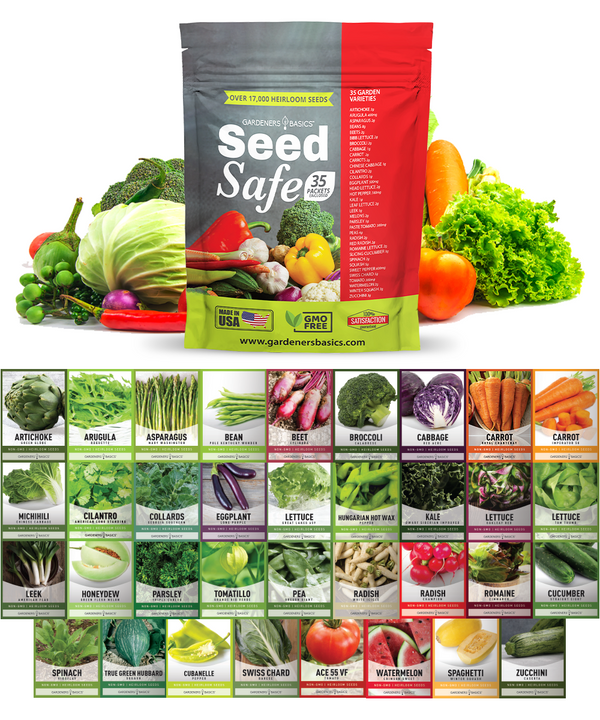
$29.95
$49.95
Seed Safe Survival Seed Kit: The Ultimate Heirloom Collection for Self-Sufficient Gardening Introducing the Seed Safe - 35 Varieties of Heirloom Vegetable, Herb, and Fruit Seeds, the ultimate solution for gardeners who want to secure a bountiful future harvest. This… read more
On average, asparagus seeds can germinate anywhere from 2-6 weeks. However, the germination time can vary depending on the factors mentioned above. To improve the chances of successful germination, use fresh, high-quality seeds, keep the soil warm and moist, and plant the seeds at the correct depth.
Asparagus seeds can take some time to germinate, but they can produce healthy and productive plants with the right conditions and care. The ideal soil temperature for germination is between 70-85°F (21-29°C), and the seeds should be planted at a shallow depth of 1/4 inch (0.6 cm). Keep the soil moist and use fresh, high-quality sources for the best chances of successful germination.
Can Asparagus Be Grown from Seed in Containers?
Yes, asparagus can be grown from seed in containers. Growing asparagus in containers is an excellent option for those with limited space or poor soil conditions. Here's what you need to know about growing asparagus from seed in containers:
-
Container Size: Asparagus requires a deep container to allow for its long roots to develop. A container at least 18 inches (45 cm) deep and 12 inches (30 cm) wide is recommended.
-
Soil: Asparagus prefers well-draining soil with a pH between 6.0 and 7.0. High-quality potting soil mixed with compost or other organic matter improves soil health and drainage.
-
Seeds: Choose fresh, high-quality asparagus seeds for the best chances of successful germination. Plant the seeds at a shallow depth of 1/4 inch (0.6 cm) and keep the soil moist during germination.
-
Location: Asparagus requires full sun to grow and produce healthy spears. Choose a place for your container that receives at least 6-8 hours of direct sunlight daily.
-
Watering: Asparagus requires consistent moisture to grow strong and healthy. Water the container deeply once or twice a week, depending on the weather and soil conditions. Avoid overwatering, as this can lead to root rot and other issues.
-
Fertilizing: Fertilize the container-grown asparagus with a balanced fertilizer, such as a 10-10-10 or 5-10-10 formula, once or twice during the growing season.
-
Transplanting: Asparagus seedlings can be transplanted into the container once they have developed at least two sets of true leaves. Be sure to transplant the seedlings into a container deep enough to accommodate their long roots.
-
Harvesting: Asparagus can be harvested once the spears are 6-8 inches (15-20 cm) tall. Cut the spears off at ground level using a sharp knife or scissors.
Asparagus can be grown from seed in containers with the proper care and attention. Choose a container at least 18 inches deep and 12 inches wide, use well-draining soil with a pH between 6.0 and 7.0, and keep the container in a location that receives at least 6-8 hours of direct sunlight daily. Water and fertilize regularly, transplant seedlings as needed, and harvest once the spears are tall enough. With the proper care and attention, your container-grown asparagus will produce a bountiful harvest for years.
What is the Best Time of Year to Start Asparagus Seeds?
The best time of year to start asparagus seeds will depend on your specific growing region and climate. Here's what you need to know about the best time of year to start asparagus seeds:
-
Climate: Asparagus is a perennial plant that requires a cold period to break dormancy and stimulate growth. Generally, asparagus seeds should be started indoors in late winter or early spring or directly sown outdoors in early spring once the soil has warmed up.
-
Growing Region: The best time of year to start asparagus seeds will depend on your specific growing region and climate. Consult your local gardening resources, such as your local cooperative extension or garden center, for specific recommendations for your area.
-
Indoor Starting: If starting asparagus seeds indoors, sow the seeds in peat pots or cell packs in late winter or early spring. Keep the seeds warm and moist, and provide adequate light once they have germinated.
-
Outdoor Sowing: If sowing asparagus seeds outdoors, wait until the soil has warmed up to at least 50°F (10°C) and all danger of frost has passed. Sow the seeds at a depth of 1/4 inch (0.6 cm) in well-draining soil.
-
Transplanting: Once the asparagus seedlings have developed at least two sets of true leaves, they can be transplanted into larger containers or the garden bed. Choose a location with full sun and well-draining soil.
The best time of year to start asparagus seeds will depend on your specific growing region and climate. Asparagus seeds should be started indoors in late winter or early spring or directly sown outdoors in early spring once the soil has warmed up. Consult your local gardening resources for specific recommendations for your area. Be sure to transplant the seedlings into larger containers or the garden bed once they have developed at least two sets of true leaves.
How Deep Should Asparagus Seeds be Planted?
Asparagus seeds should be planted at a depth of about 1/4 inch (0.6 cm) in well-draining soil. Planting asparagus seeds at the correct depth is essential for successful germination and healthy plant growth. Here's what you need to know about planting asparagus seeds at the correct depth:
-
Shallow Planting: Asparagus seeds should be planted at a shallow depth to allow easy access to warmth and moisture. Planting seeds too deep can delay germination and inhibit healthy root development.
-
Soil Temperature: Asparagus seeds require warm soil temperatures to germinate. The ideal soil temperature for germination is between 70-85°F (21-29°C). If the soil temperature is too cold, the seeds may take longer or not germinate.
-
Moisture: Asparagus seeds require consistent moisture to germinate. Be sure to keep the soil moist, but not saturated, during the germination process.
-
Light: Asparagus seeds do not require light to germinate, but they should be planted at a shallow depth to allow easy access to moisture and warmth.
-
Transplanting: Once the asparagus seedlings have developed at least two sets of true leaves, they can be transplanted into larger containers or the garden bed. Be sure to plant the seedlings at a depth that allows the roots to be covered with soil but does not bury the crown.
Asparagus seeds should be planted at a depth of about 1/4 inch (0.6 cm) in well-draining soil. Planting seeds too deep can delay germination and inhibit healthy root development. Be sure to keep the soil warm and moist during germination and transplant seedlings into larger containers or the garden bed once they have developed at least two sets of true leaves.
Asparagus requires well-draining soil with a pH between 6.0 and 7.0 for optimal growth and productivity. Here's what you need to know about choosing the suitable soil for growing asparagus from seed:
-
Soil Type: Asparagus grows best in well-draining soil rich in organic matter. Sandy loam, loam, or clay loam soils are ideal for growing asparagus, providing good drainage while retaining moisture.
-
Soil pH: Asparagus prefers a slightly acidic to neutral soil pH between 6.0 and 7.0. A soil test can be conducted to determine the pH of your soil, and amendments can be added to adjust the pH as needed.
-
Organic Matter: Adding organic matter to the soil can improve soil health and fertility and provide the necessary nutrients for healthy plant growth. Compost, well-rotted manure, or leaf mold can be added to the soil before planting asparagus seeds.
-
Drainage: Asparagus requires well-draining soil to prevent waterlogging and root rot. If your soil does not drain well, consider building raised beds or amending the soil with sand or perlite to improve drainage.
-
Soil Preparation: Before planting asparagus seeds, prepare the ground by removing any weeds, rocks, or debris. Loosen the dirt to a depth of 12-18 inches (30-45 cm) and mix in any necessary amendments, such as compost or lime.
Asparagus requires well-draining soil with a pH between 6.0 and 7.0 for optimal growth and productivity. Sandy loam, loam, or clay loam soils are ideal, and adding organic matter to the ground can improve soil health and fertility. Prepare the soil before planting asparagus seeds by removing weeds and debris, loosening the earth, and mixing any necessary amendments. Your asparagus seeds will grow into healthy and productive plants with the right soil conditions and care.
How Often Should Asparagus Seeds be Watered?
Consistent moisture is essential for the successful germination and growth of asparagus seeds. Here's what you need to know about how often to water asparagus seeds:
-
Germination: Asparagus seeds require consistent moisture to germinate. Be sure to keep the soil moist, but not saturated, during the germination process. Water the soil lightly every 2-3 days to maintain moisture.
-
Seedlings: Once the asparagus seeds have germinated and developed into seedlings, they should be watered regularly to keep the soil moist but not waterlogged. Water the seedlings deeply once or twice a week, depending on the weather and soil conditions.
-
Established Plants: Established asparagus plants require regular watering to thrive. Water deeply once or twice a week, depending on the weather and soil conditions. Be sure to water the soil around the plants and avoid getting water on the foliage, as this can promote disease.
-
Drought Conditions: Asparagus may require more frequent watering during drought or hot weather. Monitor the soil moisture and water as needed to prevent the soil from drying out completely.
-
Drainage: Asparagus requires well-draining soil to prevent waterlogging and root rot. If the soil is not draining well, reduce the watering frequency to prevent the ground from becoming waterlogged.
Asparagus seeds and seedlings require consistent moisture to grow strong and healthy. Water the soil lightly every 2-3 days during germination, and water seedlings deeply once or twice a week. Depending on the weather and soil conditions, established plants should be watered deeply once or twice a week. Monitor the soil moisture and adjust watering to prevent waterlogging and promote healthy plant growth.
How Do You Know When Asparagus Seeds are Ready to Harvest?
Asparagus seeds are ready to harvest once they have turned brown and dry on the plant. Here's what you need to know about harvesting asparagus seeds:
-
Seed Production: Asparagus plants produce seeds in the second or third year after planting. The seeds are produced on female plants, which can be identified by the red berries that form after the flowers bloom.
-
Harvest Time: Asparagus seeds are ready to harvest once they have turned brown and dry on the plant. The sources can be gathered by cutting the stems that hold the berries and allowing them to dry further in a warm, dry location.
-
Drying: Once the seeds have been harvested, they should be spread out in a single layer on a tray or other flat surface and allowed to dry further in a warm, dry location. Stir the seeds occasionally to ensure even drying.
-
Storage: Once the seeds are dehydrated, they can be stored in an airtight container in an excellent, dry location until they are ready to be planted.
-
Germination: Asparagus seeds can germinate slowly, taking 14 to 21 days to sprout. Keep the soil warm and moist during germination, and be patient as the seeds establish themselves.
Asparagus seeds are ready to harvest once they have turned brown and dry on the plant. Harvest the stems that hold the berries and allow them to dry further in a warm, dry location. Once the seeds are dehydrated, store them in an airtight container in an excellent, dry place until they are ready to be planted. Keep the soil warm and moist during germination, and be patient as the seeds establish themselves.
Vegetable Seed Vault Kit | 35 Variety Pack
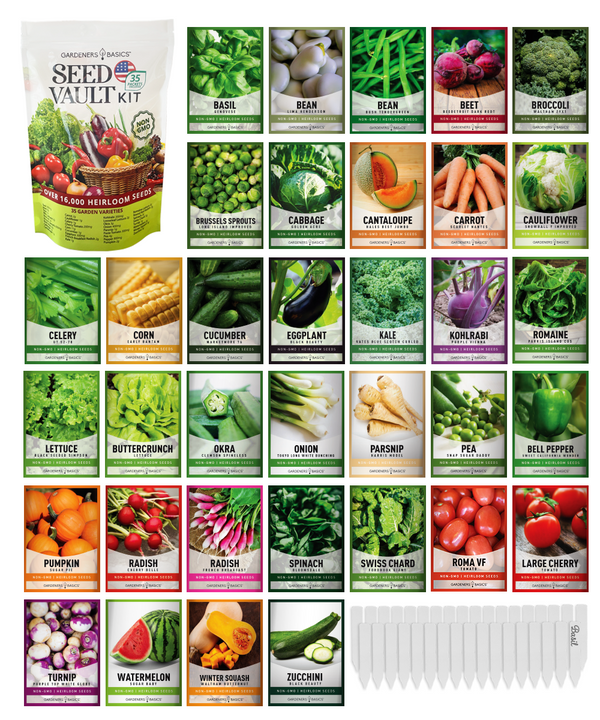
$29.95
$49.95
Ultimate Survival Seed Vault: 16,000+ Non-GMO Heirloom Vegetable Seeds for Emergency Preparedness Introducing the Seed Vault Kit, your all-in-one solution for emergency preparedness and sustainable gardening. This premium seed kit contains over 16,000 non-GMO, Heirloom, Non-Hybrid, and Open Pollinated seeds,… read more
How to Care for Asparagus Seedlings
Proper care is essential for the healthy growth and development of asparagus seedlings. Here's what you need to know about caring for asparagus seedlings:
-
Light: Asparagus seedlings require full sunlight or at least 6-8 hours of direct sunlight daily. If growing indoors, provide supplemental light with a grow light.
-
Water: Asparagus seedlings require consistent moisture to grow strong and healthy. Water the soil deeply once or twice a week, depending on the weather and soil conditions. Monitor the soil moisture and adjust watering to prevent waterlogging and promote healthy plant growth.
-
Fertilizer: Asparagus seedlings do not require fertilizer until they are at least 2-3 inches (5-8 cm) tall. At this point, a balanced fertilizer can be applied according to the manufacturer's instructions.
-
Transplanting: Once the asparagus seedlings have developed at least two sets of true leaves, they can be transplanted into larger containers or the garden bed. Choose a location with full sun and well-draining soil.
-
Mulching: Mulching around the base of the asparagus seedlings can help to retain soil moisture, suppress weeds, and regulate soil temperature. Apply a layer of organic mulch, such as straw or shredded leaves, to a depth of 2-3 inches (5-8 cm).
-
Pest Control: Asparagus seedlings are susceptible to pests such as aphids, cutworms, and slugs. Monitor the seedlings regularly for signs of pest damage and take appropriate measures to control the infestation, such as handpicking or using organic pest control products.
Proper care is essential for the healthy growth and development of asparagus seedlings. Provide full sunlight, consistent moisture, and a balanced fertilizer as needed. Once they have developed at least two sets of true leaves, transplant seedlings into larger containers or the garden bed and apply a layer of organic mulch to the base of the plants. Monitor for pests and take appropriate measures to control infestations. Your asparagus seedlings will grow into strong and healthy plants with the proper care.
How to Prevent Diseases and Pests in Asparagus Seedlings
Asparagus seedlings are susceptible to diseases and pests that can stunt growth and reduce yield. Here's what you need to know about preventing diseases and problems in asparagus seedlings:
-
Healthy Soil: Healthy soil is essential for preventing diseases in asparagus seedlings. Plant the seedlings in well-draining soil and add compost or other organic matter to improve soil health.
-
Proper watering is essential for preventing diseases and pests in asparagus seedlings. Overwatering can lead to fungal infections, while underwatering can weaken the plants and make them more susceptible to problems. Water the soil deeply once or twice a week, depending on the weather and soil conditions.
-
Good Air Circulation: Good air circulation can help to prevent fungal diseases by allowing the leaves to dry quickly after rain or watering. Avoid planting asparagus seedlings too close together and trim back any neighboring plants blocking air circulation.
-
Pest Control: Asparagus seedlings are susceptible to pests such as aphids, cutworms, and slugs. Monitor the seedlings regularly for signs of pest damage and take appropriate measures to control the infestation, such as handpicking or using organic pest control products.
-
Crop Rotation: Crop rotation can help to prevent soil-borne diseases in asparagus seedlings. Avoid planting asparagus in the exact location for more than two years and rotate it with other crops to help keep the soil healthy.
-
Disease-resistant Varieties: Consider planting disease-resistant varieties of asparagus seedlings to help prevent diseases. Look for types resistant to common asparagus diseases, such as fusarium wilt and rust.
Preventing diseases and pests in asparagus seedlings requires proper care and attention. Plant the seedlings in healthy soil with good drainage, provide proper watering and air circulation, monitor for problems, rotate crops, and consider disease-resistant varieties. With the appropriate care, your asparagus seedlings will be healthy and productive. Now that you know how to grow asparagus from seeds, will you try growing it?
Frequently Asked Questions About How to Grow Asparagus from Seeds
Q: How deep should I plant asparagus seeds?
A: Asparagus seeds should be planted at a depth of 1/4 to 1/2 inch (6-12 mm) deep in the soil.
Q: When is the best time to plant asparagus seeds?
A: Asparagus seeds should be planted in the early spring after the danger of frost has passed.
Q: How long does it take for asparagus seeds to germinate?
A: Asparagus seeds can germinate anywhere from 14 to 21 days, depending on the growing conditions.
Q: What is the best soil for growing asparagus from seed?
A: Asparagus requires well-draining soil with a pH between 6.0 and 7.0 for optimal growth and productivity. Sandy loam, loam, or clay loam soils are ideal for growing asparagus.
Q: How often should I water asparagus seeds?
A: Asparagus seeds require consistent moisture to germinate and establish. Water the soil lightly every 2-3 days during germination, and water seedlings deeply once or twice a week. Depending on the weather and soil conditions, established plants should be watered deeply once or twice a week.
Q: How do I care for asparagus seedlings?
A: Asparagus seedlings require full sunlight or at least 6-8 hours of direct sunlight daily, consistent moisture, a balanced fertilizer, and good air circulation. Once the seedlings have developed at least two sets of true leaves, they can be transplanted into larger containers or the garden bed.
Q: How do I prevent diseases and pests in asparagus seedlings?
A: Preventing diseases and pests in asparagus seedlings requires proper care and attention, including planting healthy soil, watering, and air circulation, monitoring for problems, rotating crops, and considering disease-resistant varieties.



